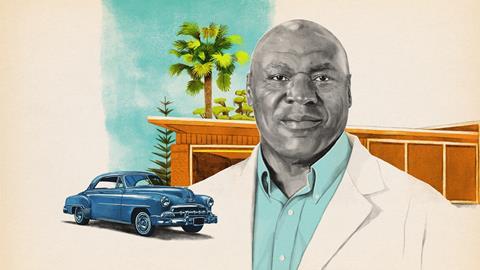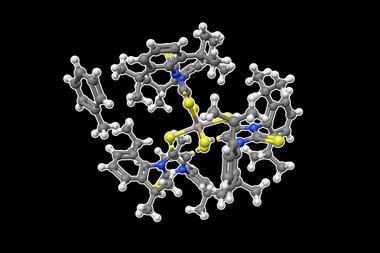The synthetic inorganic chemist on attending a segregated school in Alabama, balancing football and chemistry, and tennis as a muse
Gregory Robinson is an inorganic chemist at the University of Georgia in the US whose research focuses on the chemistry of molecules that prominently feature the main group elements. His awards include the Herty Medal, the Humboldt Research Prize, and the F Albert Cotton Award in Synthetic Inorganic Chemistry. He was speaking with Rebecca Trager
I was born and raised in Northeast Alabama, an hour or so east of Birmingham, US. We had a big family, with my mom and dad and six kids. There were three girls and three boys.
We were members of the last generation to attend segregated schools. The Supreme Court’s Brown v Board of Education decision, which ruled that racially segregated schools were unconstitutional, came in 1954, but it took more than a decade-and-a-half for the ruling to have an impact in my part of Alabama. Consequently, my classmates and I continued to attend overcrowded, underfunded, inferior segregated schools.
Midway through my 5th grade, they closed the segregated African American school, and my siblings and I all went to the integrated white school close by. It was traumatic and dramatic, but harder on my sisters because they were older than me. My siblings and I all graduated from that high school and are all college graduates.
As a child I was fascinated by science, particularly chemistry. I really embraced the logic and predictability of atoms and molecules, particularly given the chaos of racial strife at the time.
We always had books in the house – a couple of sets of encyclopaedias, science books and books of literature. My parents were high school graduates, and they really stressed education to us.
My father worked in a foundry that made various metal pipefittings, and before that he worked at a local Coca-Cola bottling plant. My mother worked as a laboratory technician at the county health department before I was born – perhaps she unwittingly passed along some ‘chemistry’ to me. Before I started school, she worked as a custodial worker for a local physician, and later she worked at a textile plant and as a seamstress.
Tennis great Arthur Ashe and basketball legend Kareem Abdul-Jabbar were my childhood heroes. I admired both their athletic prowess as well as their social activism.
Sometimes the answer comes to me on the tennis court
In high school, I was a good athlete. I played baseball, basketball and football, and attended college on a football scholarship. My high school football coach would often place his best athletes at the quarterback position. Consequently, I played quarterback. That came with significant challenges: in 1975 racial integration in the deep South was still ‘new’.
Playing football while at Jacksonville State University was quite difficult also, but for a different reason: most of the chemistry labs were in the afternoon, which conflicted with football practice. So, my chemistry professors would often allow me to complete my labs in the mornings. That allowed me to do chemistry and keep up with football practices.
There were only two African American graduate students in the chemistry department at the University of Alabama when I was pursuing my PhD: myself and one other young man. We became fast friends. He spent his career in industry and has since retired.
Outside of work I play tennis, follow college football and I like to read. When I am playing tennis if I am trying to work something out – writing or addressing a pesky experimental problem – sometimes the answer comes to me on the tennis court.
A 1951 two-door Chevy was my first car. I drove that car well into graduate school.
Addressing our energy demands remains a grand challenge and the solution will be multifaceted. Gasoline will probably be with us for decades to come. Likewise, electric vehicles and possibly non-carbon fuels like molecular hydrogen may also play a role. Chemistry will be crucial in solving this problem, particularly with non-carbon fuels.
Scientists must become better communicators regarding the complex problems that we will continue to confront – the Covid-19 pandemic made this abundantly clear.


















No comments yet